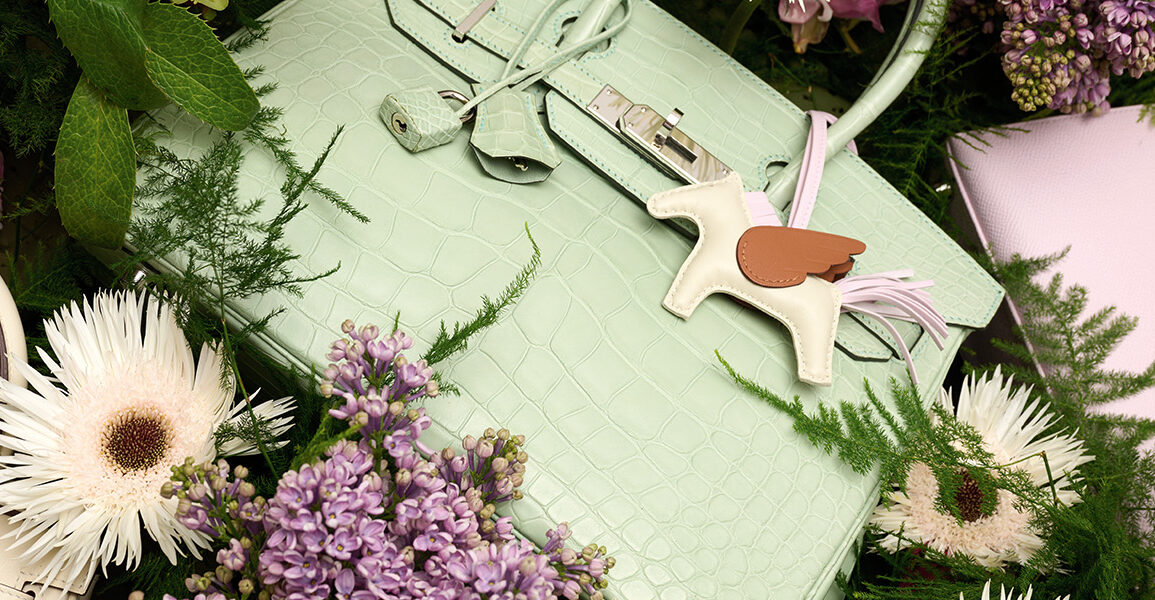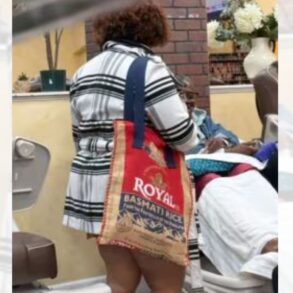
WITH DEMAND FOR SOME DESIGNS FAR OUTPACING SUPPLY, IT PAYS TO MAINTAIN AND PROTECT THESE HANDHELD INVESTMENTS
By James Appleton
The world of high fashion has a well-earned reputation for being fickle. Superstar model, entrepreneur and television host Heidi Klum summed up the industry succinctly on each episode of Project Runway: “One day you’re in, and the next day you’re out.” But one fashion category – luxury handbags – is proving that yesterday’s style can yield substantial rewards.
When it comes to investment-quality handbags, there are three iconic women’s names that dominate the conversation: Kelly, Birkin and Chanel.
The Classic: Luxury brand Hermès christened the Kelly bag in honor of American actress Grace Kelly, who popularized the accessory both on and off the silver screen during the 1950s. Just as its namesake transformed into Princess Grace of Monaco, the Kelly bag wears the crown as the most expensive handbag sold at auction. The 2021 sale of a Himalayan Niloticus Crocodile Diamond Retourné Kelly 28 for more than $515,000 set a world record that still stands today.
The Trendsetter: Thirty years after the Kelly bag became an icon, Hermès introduced a new design named for French-English actress and singer Jane Birkin. Available in a wide range of sizes and materials, the Birkin bag has become one of the world’s most coveted fashion accessories. With demand for this style far exceeding the available supply, it’s no surprise that Birkins command top dollar at auction. In 2021, Heritage Auctions sold a 30cm Himalayan Niloticus Crocodile Birkin for $140,000.
The Original: Leave it to Coco Chanel to invent the concept of a “must have” luxury handbag and scandalize polite society in the process. In 1929, handbags (known in Paris as sacs à main) were just that – small pouches carried in a lady’s hand. The original Chanel bag featured a shoulder strap, a utilitarian add-on that initially horrified the fashion elite. But the practical, yet stylish, rectangular design quickly became a favorite among women of all ages – no doubt many of them elated by the ease and convenience of hands-free portability. The value added by that first strap is echoed today in the investment value of Chanel bags. In 2018, Heritage sold a Fuchsia Alligator Small Classic Flap Bag in pristine condition for $21,250. How delightfully scandalous!
Of course, there are many other designers and styles of luxury handbags that collectors and investors actively monitor in the new and resale markets. Investors are increasingly seeking out nontraditional investment opportunities, and luxury items such as handbags, designer sneakers and wine have become favored investment options for a growing number of collectors, particularly in light of the volatility of traditional investment markets and economic inflation.
Whatever the price tag, luxury bags are a significant investment that require careful maintenance and protection to preserve their value. Here are five important recommendations:
- Store Bags Thoughtfully
Light, heat and humidity can damage leather and other textiles over time. To preserve handbags and other small accessories, store them in a climate-controlled environment away from windows and other light sources. Consider storing handbags in individual dust bags that allow air flow but protect the items from dust and debris. Keep in mind that plastic bags are not suitable for storing leather and fabric items.
- Help Bags Stay in Shape
Handbag textiles, especially leather, can stretch and soften over time. Help retain the original shape by emptying the bag after each use and inserting a “purse pillow” or fabric insert before storing. Rather than hang bags by their straps or handles, store them on a shelf, standing upright, with the zippers or fasteners closed and handles crossed over the top of the bag.
- Keep It Clean (and Repaired)
Fine leather should be cleaned with a soft cloth before storing or periodically while the bag is in use. If you notice stains, tears, broken threads or loose hardware, don’t wait to make repairs. Leather repair shops and tailors can be excellent resources, depending on the damage that needs to be addressed, but it’s important to note that in many cases, the luxury houses themselves will repair and refurbish the bag.
- Don’t Forget About the Lining
It’s important to inspect and protect a bag’s fabric lining as well as the exterior. Stains and tears are unsightly and can negatively affect the resale value of your luxury bag. Consider using a handbag insert to help protect the lining from wear and tear, and think twice before carrying anything that can spill – hello, liquid makeup! – in your high-end bag.
- Invest in Insurance
It could be a costly mistake to assume that your homeowners or renters insurance policy provides adequate coverage for luxury bags and other accessories that are expected to appreciate in value. Standard homeowners policies provide limited coverage, perhaps as little as $1,500, for lost or stolen property – and that’s after the policyholder covers the deductible. In addition, these policies generally only cover named perils. In contrast, specialized collectibles and jewelry insurance policies may include all-risk coverage at limits of up to $1 million with the option of a zero-dollar deductible.Another benefit of a stand-alone collectibles insurance policy is the fact that it is not tied to your homeowners policy. In today’s property insurance market, filing a claim against a homeowners policy may leave you vulnerable to premium increases when it’s time to renew your policy. In a worst-case scenario, the policy may be declined for renewal. With a separate collectibles policy, claims do not affect your homeowners premiums or loss history, and they are not reported to insurance claims databases.
Luxury handbags are pieces of wearable art, made with the finest materials and craftsmanship. Properly caring for, maintaining and insuring your treasured pieces are important factors in keeping them safe, maintaining their value and providing peace of mind. Before opting to insure your luxury accessories under a standard homeowners policy, take some time to research specialized insurance policies that may be a better fit for your needs and ultimately provide a more appropriate level of coverage.
JAMES APPLETON is Director of Program Sales for Phoenix-based MiniCo Insurance, a Jencap company. MiniCo offers monoline specialty insurance specifically designed to cover fine art, collectibles and items expected to increase in value. Additional information is available at MiniCoCollectiblesDirect.com.
This post was originally published on this site be sure to check out more of their content.






